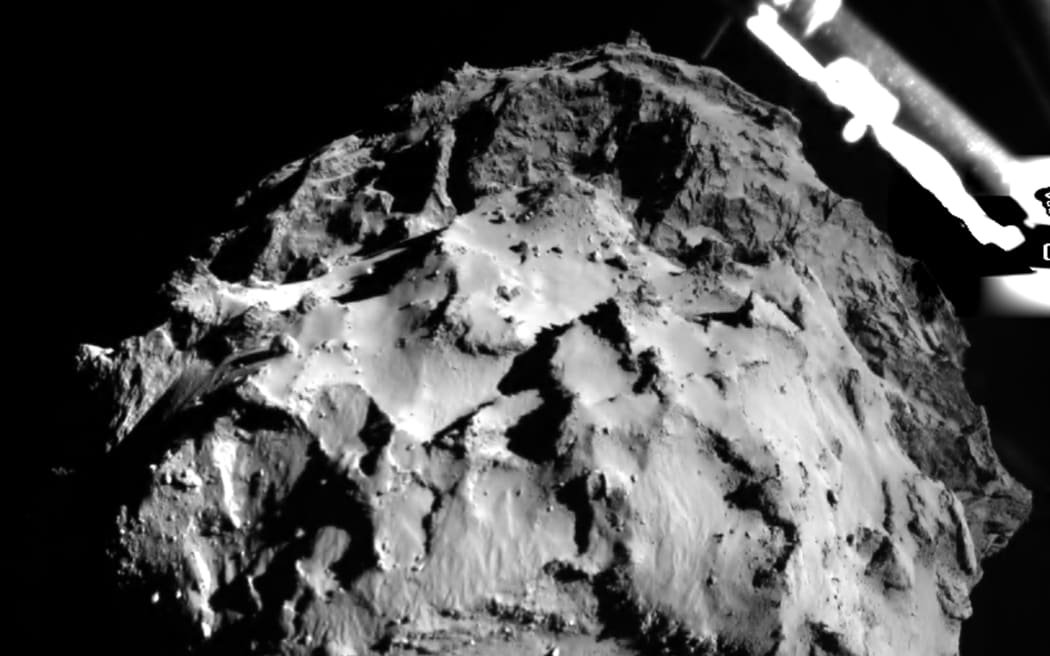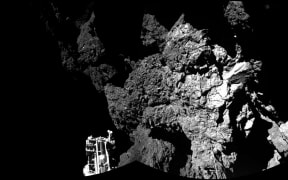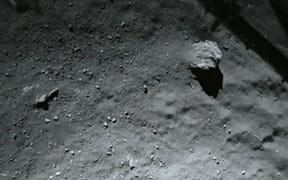The European Space Agency says the Philae lander has stopped transmitting information from the comet where it landed on Thursday, and has gone into standby mode to conserve its remaining power.

The comet shown from a camera on Philae about 3km from the surface. A segment of the probe's landing gear is visible in the upper right hand corner. Photo: PHOTO / ESA / Rosetta / Philae / ROLIS / DLR
Earlier it sent a burst of science data about samples it had scooped up from the comet, but it has been unable to recharge its batteries.
Everything expected from the little probe was delivered, just before low battery power dropped it into standby mode, the BBC reported.
The robot was shadowed by a cliff and could get enough light on to its solar panels to recharge its systems.
Philae descended to the surface of 67P this week - the first time in history that a space mission has made a soft landing on a comet.
The next opportunity to talk to Philae will come when the orbiting Rosetta satellite - which delivered it to the 4km-wide "ice mountain" - comes over the horizon.
But with only 1.5 hours of sunshine falling on the robot during the comet's 12-hour day, it seems doubtful the battery will have recovered enough performance to complete the radio link.
Engineers did manage to maximise the possibility of it happening, though, by sending a command to re-orientate the lander.
This involved raising Philae by 4cm and rotating its main housing by 35 percent.
This will ensure the largest solar panel catches the most light.





